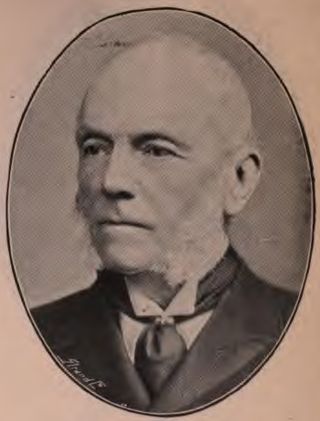Wentworth baronets, of Gosfield (1611)

- Sir John Wentworth, 1st Baronet, of Gosfield (c. 1583–1631)
There have been five baronetcies created for persons with the surname Wentworth, four in the Baronetage of England and one in the Baronetage of Great Britain. All creations are extinct.
The Wentworth Baronetcy, of Wentworth Woodhouse in the County of York, was created in the Baronetage of England on 1611. [1] For more information on this creation, see Earl of Strafford.
The Wentworth Baronetcy, of Gosfield in the County of Essex, was created in the Baronetage of England on 29 June 1611 for John Wentworth. The title became extinct on his death in 1631. [2]
The Wentworth Baronetcy, of West Bretton in the County of York, was created in the Baronetage of England on 27 September 1664 for Thomas Wentworth. [3] The fourth Baronet sat as Member of Parliament for Malton. The title became extinct on the death of the fifth Baronet in 1792.
The Wentworth Baronetcy, of North Elmsal in the County of York, was created in the Baronetage of England on 28 July 1692 for John Wentworth. The title became extinct on the death of the second Baronet in 1741.
The Wentworth Baronetcy, of Parlut in the County of Lincoln, was created in the Baronetage of Great Britain on 16 May 1795 for John Wentworth. The title became extinct on the death of the second Baronet in 1844.




There have been five baronetcies created for persons with the surname Barker, three in the Baronetage of England, one in the Baronetage of Great Britain and one in the Baronetage of the United Kingdom. All five creations are extinct.

There have been three Baronetcies created for persons with the surname Cotton, all in the Baronetage of England. One creation is extant as of 2008.

There have been ten baronetcies created for persons with the surname Browne, six in the Baronetage of Great Britain, three in the Baronetage of Ireland and one in the Baronetage of Nova Scotia. Only one creation is extant as of 2010. Three of the creations were for members of the Browne family headed by the Viscount Montagu.

There have been two baronetcies created for persons with the surname Aston, both in the Baronetage of England. Both creations are extinct.

There have been two Baronetcies created for persons with the surname Austen, one in the Baronetage of England and one in the Baronetage of Great Britain. Both creations are extinct.
The Ayloffe Baronetcy, of Braxted Magna in the County of Essex, was a title in the Baronetage of England. It was created on 25 November 1611 for Sir William Ayloffe, subsequently Member of Parliament for Stockbridge. The second Baronet was High Sheriff of Essex and supported the Royalist cause in the Civil War. The third Baronet was an officer in the Royalist army during the Civil War. The fourth Baronet was a London merchant. The fifth Baronet was Rector of Stanford Rivers in Essex from 1707 until 1730. The sixth Baronet was an antiquary. The title became extinct on his death 19 April 1781.
There have been five baronetcies created for persons with the surname Vavasour, three in the Baronetage of England and two in the Baronetage of the United Kingdom. As of 2008 four of the creations are extinct while one is extant.
There have been seven baronetcies created for persons with the surname Powell, five in the Baronetage of England and two in the Baronetage of the United Kingdom. Only one creation is extant as of 2007.

There have been three Baronetcies created for persons with the surname Seymour, two in the Baronetage of England and one in the Baronetage of the United Kingdom. One creation is extant as of 2008.

There have been four baronetcies created for people with the surname Drake, three in the Baronetage of England and one in the Baronetage of Great Britain.
There have been three baronetcies created for persons with the surname Noel, two in the Baronetage of England and one in the Baronetage of Great Britain. One creation is extant as of 2008.
There have been two baronetcies created for members of the Reade family, both in the Baronetage of England. Both creations are now extinct.

There have been four baronetcies created for members of the ancient House of Beaumont, all in the Baronetage of England. All four creations are extinct or dormant.

There have been six baronetcies created for members of the Corbet family, four in the Baronetage of England, one in the Baronetage of Great Britain and one in the Baronetage of the United Kingdom. All creations are extinct. The recipients were descendants of the ancient Norman family of Corbet which held substantial estates in Shropshire including Wattlesborough, Caus Castle, Moreton Corbet Castle and Acton Reynald Hall.

There have been five baronetcies created for persons with the surname Morgan, two in the Baronetage of England, one in the Baronetage of Great Britain and two in the Baronetage of the United Kingdom. All five creations are extinct.

There have been two baronetcies created for persons with the surname More, both in the Baronetage of England. Both creations are extinct.
There have been two baronetcies created for persons with the surname Garrard, both in the Baronetage of England. Both creations are extinct.
There have been two baronetcies created for persons with the surname Pickering, one in the Baronetage of Nova Scotia and one in the Baronetage of England. Both creations are extinct.

The Palmer Baronetcy, of Wingham in the County of Kent, was created in the Baronetage of England on 29 June 1621 for Thomas Palmer. The third Baronet was High Sheriff of Kent in 1691. The fourth Baronet sat as Member of Parliament for Kent and Rochester. The title became extinct on the death of the sixth Baronet in 1838.
Sir John Wentworth, 1st Baronet, of Gosfield, was an English aristocrat.